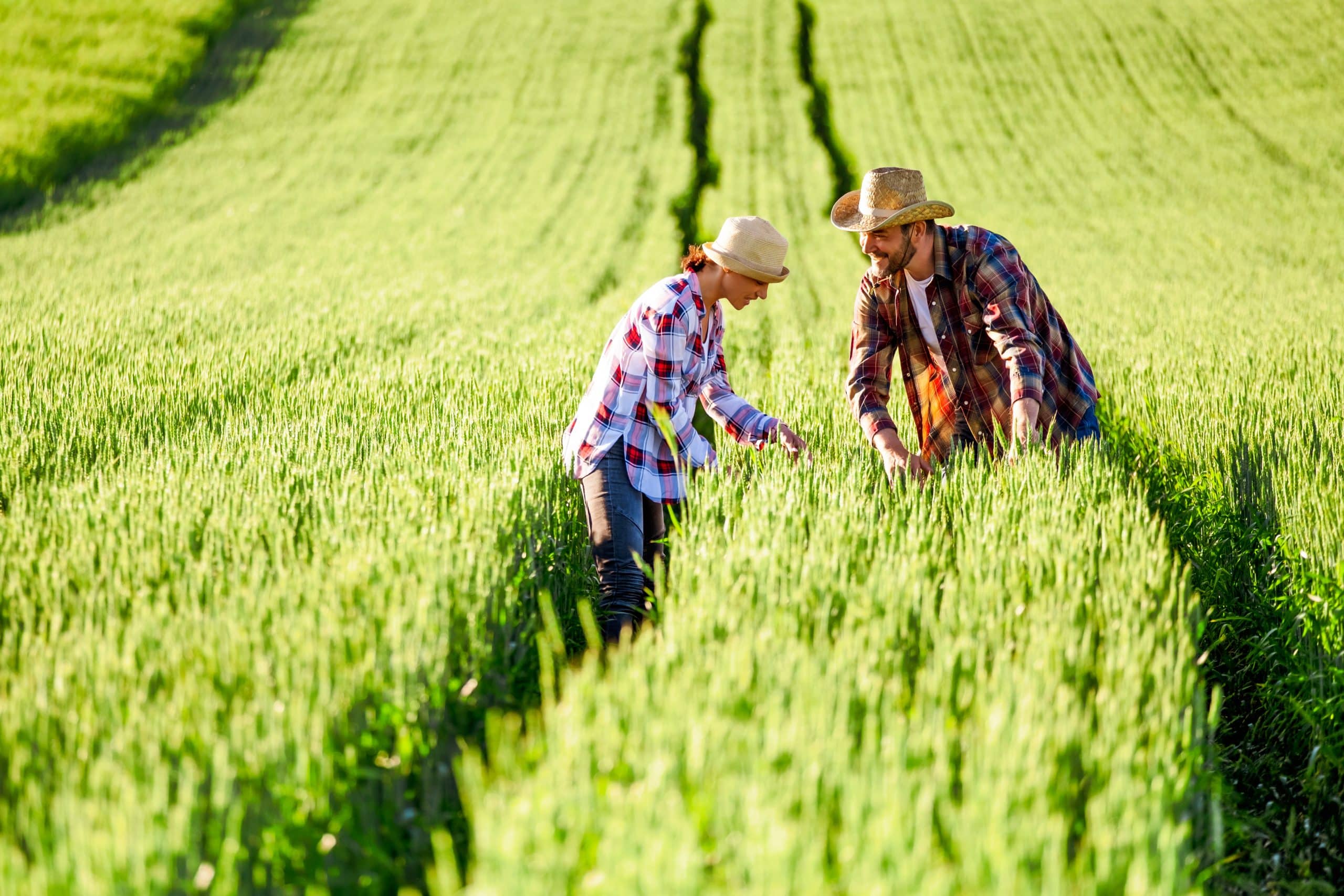How Is Digital Twin Technology Being Applied in Precision Agriculture?

In an era where digital technology and data permeate every corner of our lives, a fascinating development has emerged in the agricultural sector, one that entails creating a digital ‘twin’ of physical systems. The concept of digital twins, just like human twins, entails creating a replica of a real-world entity in a virtual environment. In this context, we’re not referring to human twins, but rather to a digital twin of a farming system. The digital twin is an accurate, data-driven model of an agricultural system, providing a comprehensive review of all of its elements, from the soil to the crops. It captures the complex interactions between all the elements of the farm, enabling farmers to optimize food production and minimize environmental impact. In this article, we delve deeper into how digital twin technology is revolutionizing precision agriculture.
The Concept of Digital Twin in Agriculture
The concept of a digital twin is relatively simple to grasp. It is essentially a digital replica of a real, physical system. This virtual model is used to simulate, predict, and optimize the system it replicates, often in real-time. In agriculture, a digital twin mirrors the farm, including the soil, crops, weather conditions, and farming techniques.
Have you seen this : How Can AI-Driven Smart Mirrors Transform the Retail Clothing Experience?
The digital twin technology uses data to create a highly accurate model of the agricultural system. It captures data from a variety of sources, including sensors placed in the soil to measure moisture levels, drones flying over the crop fields to assess plant health, and weather stations to forecast weather conditions.
The application of digital twin technology in agriculture is a part of the broader trend of precision farming. Precision farming refers to the use of digital technology and data to enhance agricultural productivity and sustainability. It involves collecting and analyzing data about the farming system to make informed decisions about crop management.
In parallel : Can Non-Invasive Brain-Computer Interfaces Improve Outcomes in Stroke Rehabilitation?
The Role of The Digital Twin in Precision Farming
The digital twin plays a crucial role in precision farming. It helps farmers to comprehensively understand their farming system, allowing them to manage their crops more effectively.
Firstly, the digital twin provides a real-time, data-driven view of the farm. It integrates data from various sources to create a comprehensive model of the farm. This allows farmers to monitor the state of their crops and soil in real-time, enabling them to quickly identify and address any issues.
Secondly, the digital twin enables farmers to simulate different scenarios and predict their outcomes. For instance, they can simulate the impact of a drought or a disease outbreak on their crops. This enables them to prepare for potential challenges and mitigate their impact.
Finally, the digital twin facilitates optimization. By analyzing the data, farmers can identify opportunities for improving crop yield, reducing costs, or minimizing environmental impact. They can then implement these optimizations in the real farming system, effectively transferring the insights gained in the virtual environment to the physical farm.
Creating a Digital Twin: The Role of Data and Crossref
The creation of a digital twin requires a significant amount of data. This data can be collected from a variety of sources, such as soil sensors, weather stations, and drones. It is then integrated into a comprehensive model of the farm, creating the digital twin.
Crossref plays a crucial role in the creation of the digital twin. Crossref is a system that allows scholars and researchers to link digital content across different platforms. In the case of the digital twin, Crossref can be used to link data from various sources, creating a comprehensive and interconnected model of the farm.
The data used to create the digital twin is not static. It is continually updated, ensuring that the digital twin remains an accurate reflection of the real farm. This real-time data integration is what makes the digital twin such a powerful tool for precision farming.
The Impact of Digital Twin Technology on Agricultural Management
Digital twin technology is a game-changer for the agricultural sector. It offers several benefits that can significantly improve agricultural management.
Firstly, it enhances decision-making. With a digital twin, farmers can make data-driven decisions about their crops. They can use the digital twin to monitor the state of their crops and soil in real-time, identify issues, and implement solutions.
Secondly, it improves efficiency. The digital twin allows farmers to optimize their farming practices, reducing costs and improving crop yield. For instance, by analyzing the data from the digital twin, farmers can identify areas where water or fertilizer usage can be reduced without impacting crop yield.
Finally, it promotes sustainability. By optimizing their farming practices, farmers can reduce their environmental impact. They can use the digital twin to identify opportunities for reducing water usage, minimizing chemical use, or improving soil health.
The Future of Digital Twin Technology in Agriculture
The future of digital twin technology in agriculture looks promising. As technology continues to evolve, the capabilities of the digital twin are expected to expand.
In the future, digital twins may be able to incorporate more complex models of the agricultural system. For instance, they might incorporate models of the local ecosystem, enabling farmers to understand the impact of their farming practices on local biodiversity.
Also, as more data becomes available, the accuracy of the digital twin is expected to improve. This will enable farmers to make even more precise decisions about their crops.
While challenges remain, particularly in terms of data privacy and security, the potential benefits of digital twin technology in agriculture are vast. As such, it is a technology that is likely to play an increasingly important role in the future of farming.
The Potential of Digital Twin Concepts in Livestock Farming and Supply Chain
The potential of digital twins extends beyond crop farming and into livestock farming and supply chain management. These areas hold promises for enhanced decision making and effective management, bridging the gap between real-world practices and virtual simulations.
In livestock farming, digital twin technology could revolutionize the way animals are managed and cared for. Sensors placed on animals can monitor vital signs and behaviors, providing real-time data on each animal’s health and well-being. This data feeds into the digital twin, which can alert farmers to any signs of disease or distress among their livestock. This proactive management approach can help farmers maintain healthier herds, reducing veterinary costs and improving animal welfare.
Furthermore, digital twin technology can enhance decision-making in supply chain management. By creating a digital twin of the entire supply chain, farmers and agricultural managers can better understand the flow of goods from field to market. This can help identify inefficiencies, reduce waste, and ensure that produce gets to the market in the best possible condition.
For instance, a digital twin of a post-harvest supply chain can simulate different scenarios, such as changing transport routes or storage conditions. Farmers can then use these insights to make informed decisions, optimizing the supply chain and ensuring the highest quality produce reaches consumers.
The Intersection of Artificial Intelligence, Machine Learning and Digital Twin Technology
As we look to the future, the integration of artificial intelligence (AI) and machine learning with digital twin technology offers exciting prospects for precision agriculture.
AI and machine learning can enhance the capabilities of digital twins, enabling them to learn from the data they collect and make increasingly accurate predictions. This can significantly improve decision support, enabling farmers to make more informed, data-driven decisions about their farming practices.
For instance, a digital twin powered by AI could predict the outcome of different farming practices based on historical data. It could then suggest the most effective practices to optimize crop yield or reduce environmental impact. In real-time, farmers could adjust their practices based on these suggestions, enhancing their efficiency and sustainability.
Moreover, the combination of big data with machine learning and digital twin technology could revolutionize agriculture research. Scholars could use platforms like Google Scholar to access and cross-reference a wealth of data, enhancing their understanding of complex farming systems and developing more effective farming strategies.
Conclusion
In conclusion, digital twin technology is transforming precision agriculture. By providing an accurate, data-driven model of the farming system, it enables farmers to monitor their crops and livestock in real time, simulate different scenarios, and optimize their farming practices.
Looking to the future, the integration of artificial intelligence and machine learning with digital twin technology holds exciting prospects. Not only could it enhance decision making and optimize farming practices, but it could also revolutionize agricultural research.
While challenges remain, particularly in terms of data privacy and security, the potential benefits of digital twin technology are vast. It’s a technology that offers the promise of a more efficient, sustainable, and productive future for agriculture. As we navigate through the digital age, it’s clear that this technology will open a separate window of opportunities for farmers and the agricultural sector as a whole.
